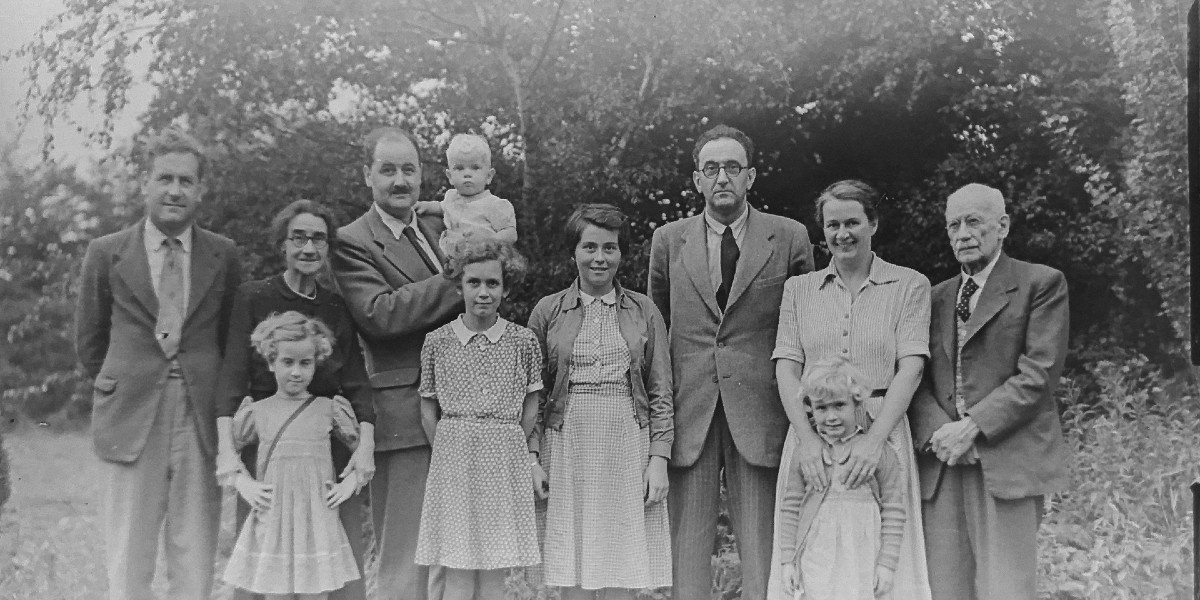Michael O’Malley is a U.S. history professor at George Mason University. He has authored multiple books, most recently Face Value and Beat Cop.
What’s the big idea?
Genealogy is a unique branch of history that has yet to be fully embraced by serious historians. However, academic questions—why something happened, or what it means—can bring a rigor and depth to the study of family history. Through the study of his own family, historian Michael O’Malley places his ancestors in the greater context of America’s racial and political past.
Below, Michael shares five key insights from his new book, The Color of Family: History, Race, and the Politics of Ancestry. Listen to the audio version—read by Michael himself—in the Next Big Idea App.

1. Getting history and genealogy to talk to each other.
Millions of people love doing genealogy because they want to understand what the past means and feel a connection to the past. Historians share that interest, but we don’t usually engage with family history because often it seems like a parade of ever-more-distant ancestors until somebody famous turns up. Instead, historians want to talk about why something happened or make an argument about what things mean. I wanted to start building connections between history and family history, making the relationship between the two a little clearer.
2. Genealogy and individualism.
Individualism is an idea about what people are and how they relate to each other. It represents a radically new perspective on personal identity, freeing individuals from traditional sources of identity. In this modern sense, individuals derive their identity solely from themselves rather than their families. A person maintains the same identity regardless of location, whether on a desert island or in a crowded city. They remain the same person at death as they were at birth.
“People possessed personhood before they had a legal identity, and in theology, they were considered to have a distinct soul.”
Birth certificates, driver’s licenses, fingerprints, and retinal scans—these items construct a unique individual identity. People possessed personhood before they had a legal identity, and in theology, they were considered to have a distinct soul. However, most of the individuals that genealogists trace only exist to us because of the records documenting their existence. In this sense, genealogical records create individuals, and the genealogical records produced by governments mark the rise of individualism. Documents of identity are the tools and machinery that make this idea function.
3. Genealogy as a record of pain and joy.
Genealogical records are often the records of pain and anxiety inflicted by law on the weak: the pain of slavery, indenture, imprisonment, immigration, or displacement. Genealogical records might also be records of joy—the joy at the birth of a child or a marriage. But even then, they represent a moment when an ordinary person clutched some money they scraped up to pay a fee and traveled to an intimidating office where they had to confront the law. Sheriffs, judges, clerks, immigration inspectors, or police could grant legitimacy or the right to marry or the right of entry into a new country. Each encounter amounted to a test that the subject might fail.
4. Individualism and racism.
We often see individualism described as the alternative to racism, but individualism and racism strolled hand-in-hand through county courts, state capitals, and federal record offices. Individualism as the foundation of a system of government arose at the same time as the modern idea of race, and this isn’t a coincidence. Fixing people as individuals was the first step toward fixing them as members of a race. Imagining individualism as the solution to the problem of racism is like imagining clocks as the solution to punctuality. Clocks produced the idea of being on time in the first place. They created the possibility of punctuality and then made it possible to be late or early. A problem can’t be eliminated by what created it.
5. The advantages of being white rather than Irish.
In Pennsylvania’s coalfield, poor Irish Catholics took the worst jobs—just as they had in Ireland—and they kicked against their betters as they had in Ireland, too. They were put down hard, and everyone outranked the savage and superstitious Irish Catholic laborer.
“An Irish Catholic who threw off his faith would secure a higher status.”
In Virginia, however, the other laborers would be African Americans relegated by law and custom to the lowest place, so Irish whiteness could confer a higher status. The comparative advantages of whiteness were clear at every construction site and every rail camp where the workforce was a mix of races, allowing for better jobs and the boss’s favor. Hard labor in a place where a worker was seen as more white than Irish would lead to more certain rewards. An Irish Catholic who threw off his faith would secure a higher status. The cost of being Catholic was high, and my ancestor was ready to stop paying them.
To listen to the audio version read by author Michael O’Malley, download the Next Big Idea App today:






























